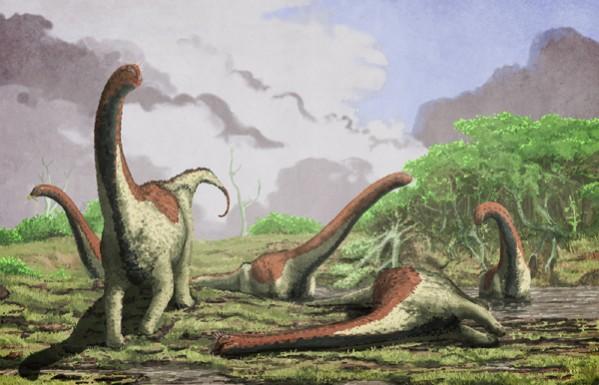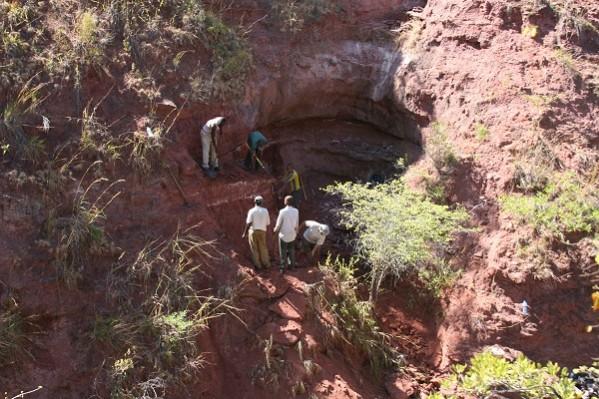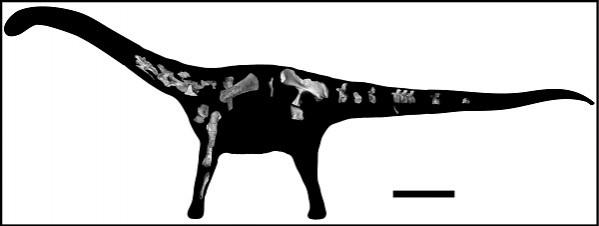
Scientists from the University of Ohio have discovered a giant dinosaur that lived around 100 million years ago, in the sub-Saharan region of Tanzania.
This new specie of dinosaur has been named the Rukwatitan Bisepultus. The scientists found its remains on the wall of a cliff, in the Rukwa Rift Basin, in the south-western parts of Tanzania, Africa. The scientists have found the pelvic bones, limbs, ribs, and the vertebrae of this gargantuan creature.
"Using both traditional and new computational approaches, we were able to place the new specie within the family tree of sauropod dinosaurs and determine both its uniqueness as a specie and to delineate others species with which it is most closely related," said Eric Gorscak, the lead author of the study, as well as a Doctoral Student of Bio Science at the Ohio University, in a press release.
Experts say that this is a bit of a rare discovery, as very few fossilised dinosaurs have been found in sub-Saharan Africa. This humongous fossil was actually discovered in 2007, in the Rukwa Rift Basin. However, political instability, along with certain other factors (like geological conditions) delayed further discovery.

Experts believe that the fossils in Africa are harder to find because of the tectonic plate movement that shaped the continents on Earth today.
As the giant southern supercontinent of Gondwanaland began to break away into several pieces, this phenomenon started to take effect.
When Gondwanaland broke off, South America travelled west, Antarctica travelled south, the land masses of India, Arabia and Australia travelled east, while Africa remained more-or-less stable. Hence, the fossils in Africa remained buried deep beneath the surface, while the ones in South America got pushed a lot nearer to the surface, making them easier to find.
Although the Rukwatitan Bisepultus has been categorized as a sauropod, many CT scans and detailed studies have revealed that it had features that made it quite different from most other sauropods discovered. It was even different from the few sauropods that were discovered in sub-Saharan Africa.

The Rukwatitan Bisepultus, much like the other sauropods, was an herbivore, and was extremely large in size. It had a long neck and tail, and a very wide stance. Although it is not considered to be as big as some of the other sauropods, it is believed that its front limbs are around two meters in length. Scientists believe that it weighed as much as a few elephants put together.
"There may have been certain environmental features, such as deserts, large waterways and/or mountain ranges, that would have limited the movement of animals and promoted the evolution of regionally distinct faunas," said Patrick O'Connor, co-author of the study, and Professor of Anatomy, at the Heritage College of Osteopathic Medicine, Ohio University. "Only additional data on the faunas and paleo environments from around the continent will let us further test such hypotheses."

















